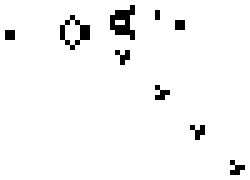Pixels are either on or off. The minimum amount you can move a sprite is a single pixel. So how you make the sprite move slower than 1 pixel per frame?
The way I did it was to add the speed to a variable and test if it had reached 1 (or -1). If it did, then I would move the sprite and reset the variable to 0, like so:
update(dt):
temp_dx += speed * dt
temp_dy += speed * dt
if (temp_dx > 1)
move sprite
reset temp_dx to 0
if (tempy_dy > 1)
move sprite
reset temp_dy to 0
I disliked this approach because it feels silly and the sprite's movement looks very jerky. So in what way would you implement sub-pixel movement?

